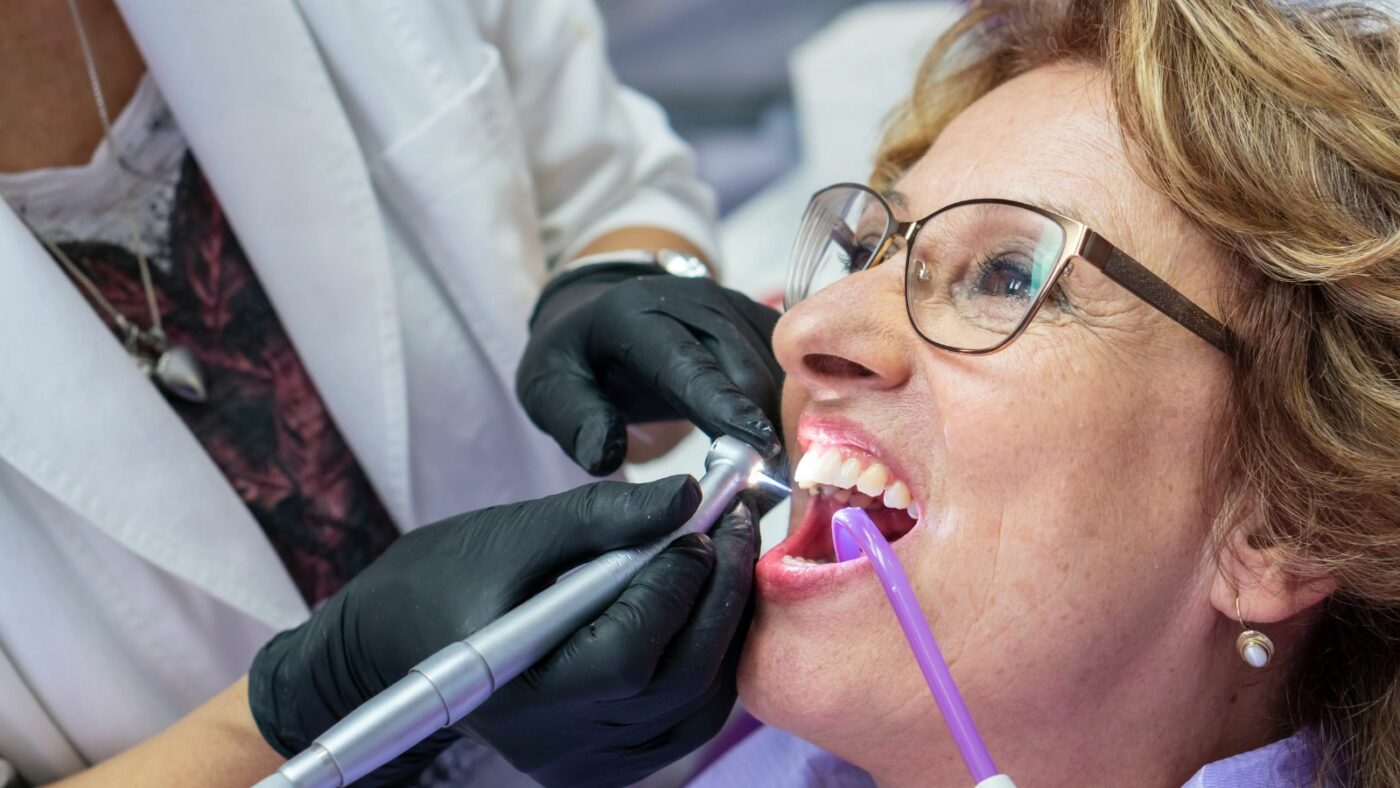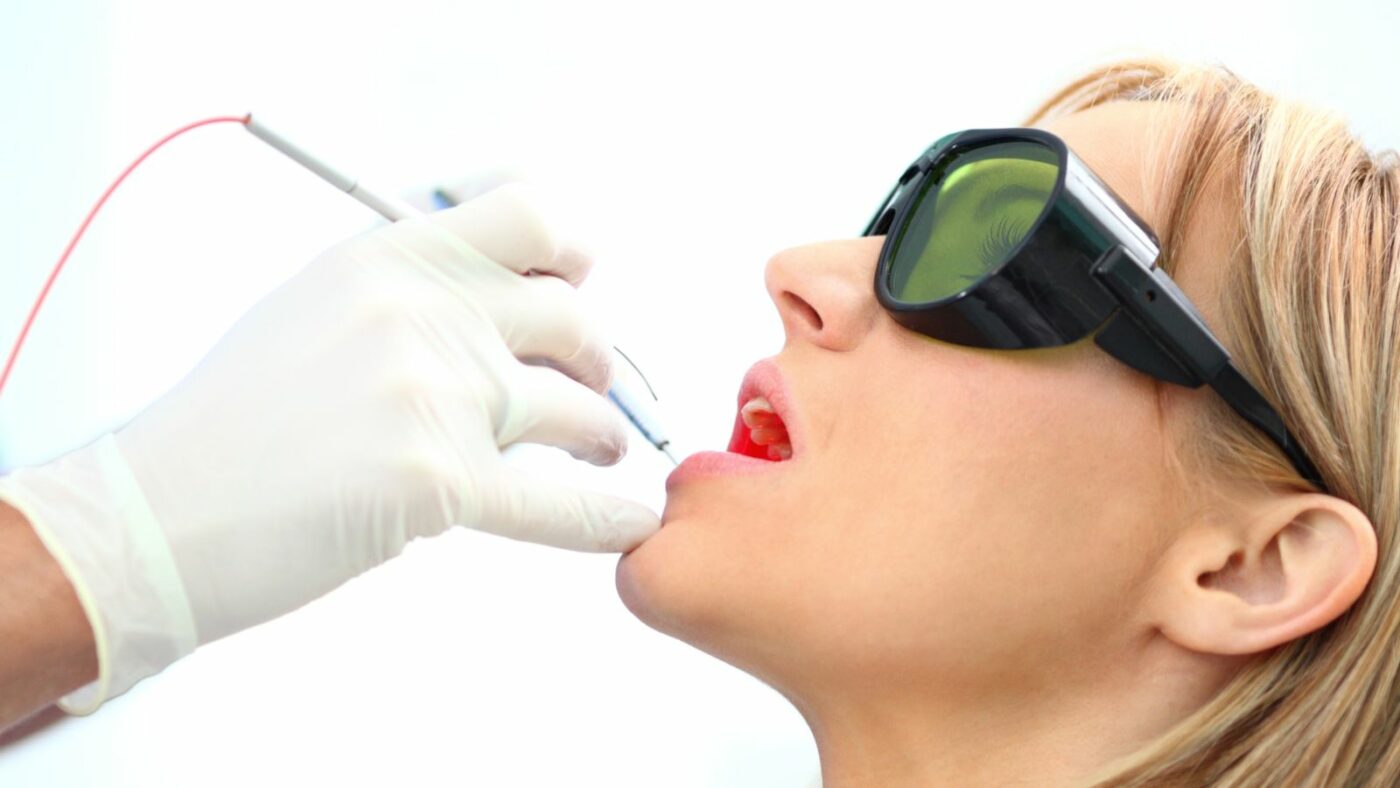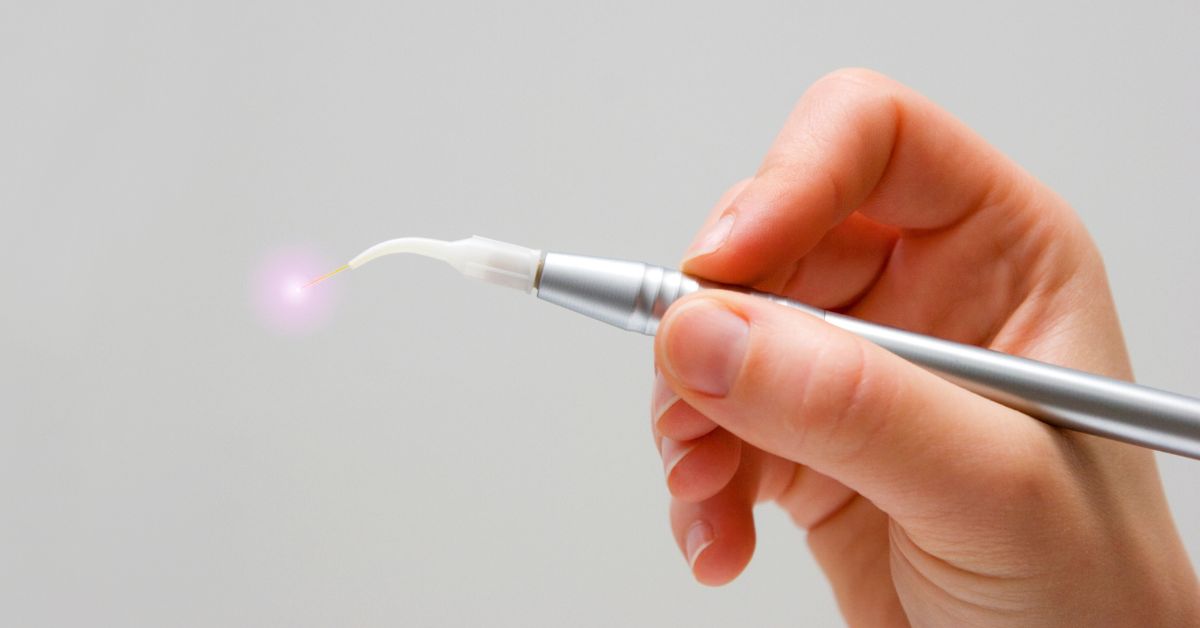- Laser dentistry uses focused light energy for precise treatments, causing less harm to surrounding tissues. It can handle tooth decay, gum disease, and teeth whitening.
- Its benefits include increased efficiency and cost-effectiveness due to fewer clinic visits, and a potentially more comfortable experience. However, it has limitations like inability to fill certain cavities or teeth with certain fillings. Incorrect usage may lead to tissue damage.
- Laser dentistry treats gum disease, cavities, and gum recession. It’s also transforming dental surgery due to its precision and minimally invasive nature.
- Costs of laser dentistry treatments can range from a few hundred to thousands of dollars. Still, they can be more cost-efficient than traditional treatments. Payment plans and healthcare financing companies can aid affordability.
- To find laser dentistry services, use web searches or insurance provider directories. Check the dentist’s qualifications and seek personal recommendations to ensure the best care.
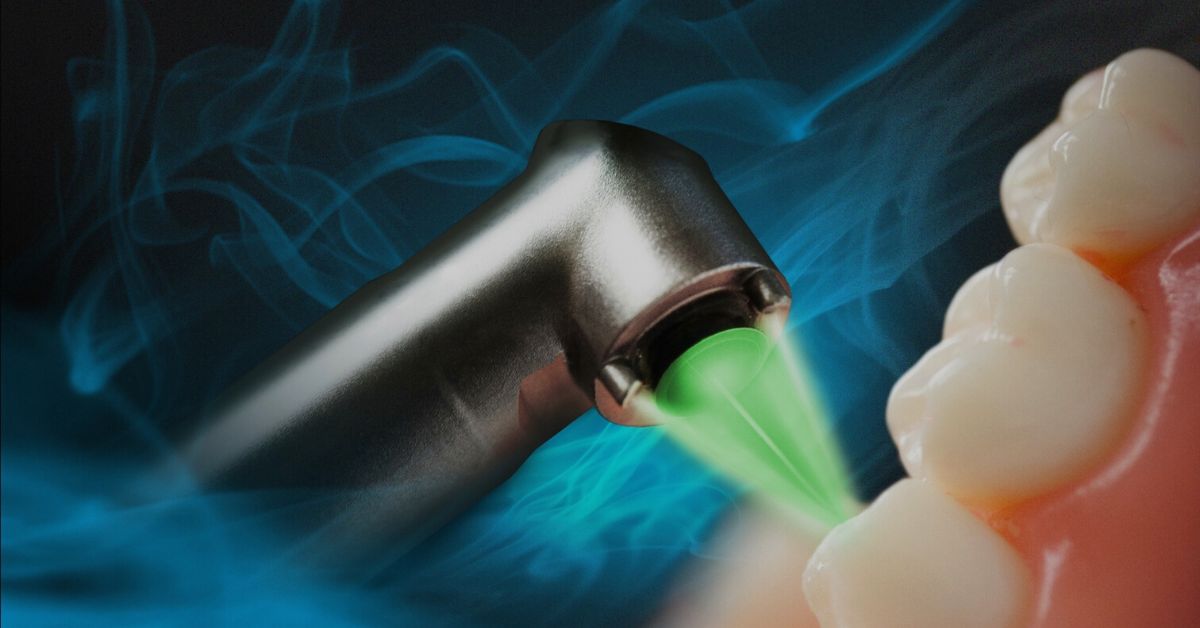
Is laser dentistry reshaping the future of oral care? Pop a mint, settle in, and let’s drill down into this innovative realm of dentistry. In this enlightening deep dive, we’ll illuminate why lasers are causing a buzz in dental offices around the globe. Get ready to discover if laser dentistry might just revolutionize your next visit to the dentist!
What is Laser Dentistry and How Does it Work?
In the realm of dental care, laser dentistry is the rising star. Undertaken with advanced dental lasers, it’s a novel tool that revolutionizes dentistry. I’d recommend you to take a look at this page on Healthline for more info.
How Does Laser Dentistry Work?
Laser dentistry works by using light energy in a very focused manner. Tiny, powerful beams can target specific areas in your mouth with extreme precision. This precision leads to minimal harm to the surrounding tissues.
Types of Lasers in Dentist Procedures
Dental lasers come in different types. Some are for your teeth’s hard tissue. On the other hand, some are suitable for soft tissues. The variety ensures the perfect laser for each procedure.
Applications of Dental Lasers in Dentistry
Dental lasers have wide uses. Say goodbye to dreaded drills! Lasers handle tooth decay, gum disease, and even teeth whitening. Also, laser dentistry surprises patients. Often, they feel more at ease and comfortable. Cutting-edge laser dentistry tools change the way we view dental care. Will this be the new norm in the future? Only time will tell.
What Are the Benefits and Downsides of Laser Dentistry?
Laser dentistry may appear futuristic, but it’s a reality. As a professional in the field, I’ve witnessed an upswing in its use due to the benefits it offers in dental care. However, like any medical procedure, it doesn’t come without certain drawbacks.
What Makes Laser Dentistry More Efficient, Cost-Effective, and Comfortable?
Taking a deep dive into the benefits of laser dentistry, you’ll find that it trumps traditional strategies in numerous ways. Chiefly, it’s more efficient as it permits exact treatment, focusing only on the targeted tissue. By doing so, it saves the surrounding healthy tissues, resulting in a faster recovery time.
Another bonus point is the cost-effectiveness of laser dentistry. Contrary to popular belief, it could lead to fewer clinic visits and thus, fewer overall treatment charges. I’ve found that several patients require less anesthesia during their laser procedures, adding to its affordability.
Perhaps the most attractive feature of laser dentistry is the comfort it provides. Fear of the dentist’s chair has been a long-standing issue, but with the introduction of lasers, routine visits are less daunting. Pain and discomfort are often minimized, reducing the need for heavy sedation.
What are the Limitations and Potential Risks in Laser Dentistry?
Despite the numerous advantages, there are certain limitations to laser dentistry. One common constraint is that lasers can’t be used to fill certain types of cavities. Additionally, lasers can’t be used on teeth that already have certain types of fillings.
In terms of risks, while they are typically small, potential tissue damage may occur if the laser isn’t properly used. Anesthesia may still be required for some procedures, and drills may still be necessary for certain steps.
How Does Laser Dentistry Compare with Traditional Techniques?
Comparably, laser techniques may appear superior to traditional ones. However, this is largely dependent on the procedure needed, the patient’s comfort level, and ultimately, the dentist’s expertise. It’s vital to remember that, similar to any medical technology, efficacy lies in its correct usage.
In conclusion, as outlined in this research article, with proper usage, laser dentistry holds immense potential for revolutionizing dental care. However, patients and professionals alike must make an informed decision, understanding both the pros and cons.
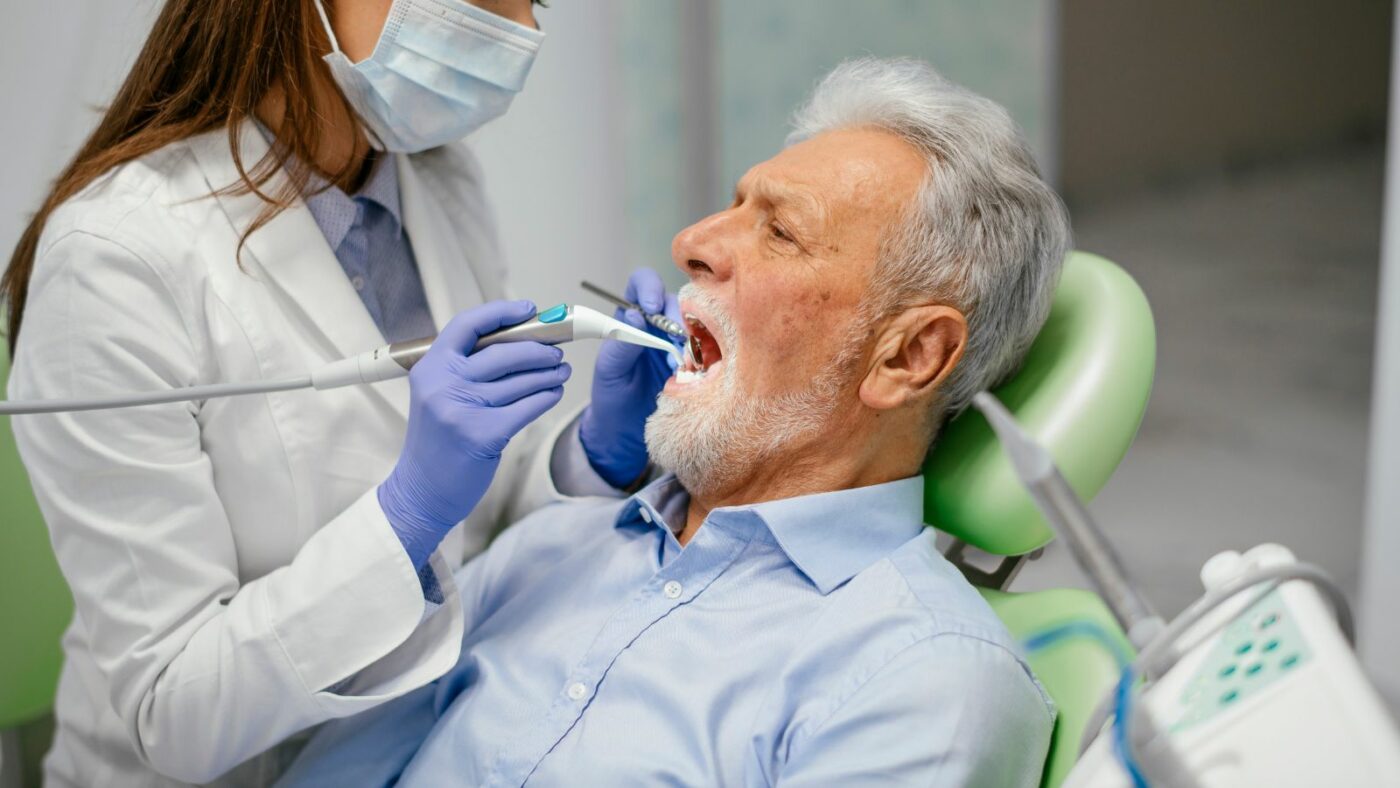
Different Dental Conditions and Procedures Treated by Lasers
Laser dentistry is a cutting-edge field, treating dental conditions from gum disease to cavities.
How is Laser Dentistry Used for Gum Diseases and Cavities?
Let’s first look at two common oral health challenges; gum disease and cavities. Laser treatment for gums provides a non-invasive, pain-free option for patients with periodontal disease. The laser precisely removes the infected gum tissue, allowing healthy gums to regrow. As for cavities, laser cavity fillings offer a quick and efficient method of removing decayed tooth material, often without the need for local anesthesia.
What is Laser Dentistry’s Role in Treatment of Other Dental Conditions?
But laser dentistry isn’t just about gum disease and cavities. This advanced treatment option also plays a vital role in addressing other dental conditions. For example, laser dental treatment for gum recession can stimulate gum tissue regeneration, giving smiles a fuller appearance and reducing tooth sensitivity.
Understanding Laser Dental Surgery Procedures
Going beyond disease treatment, laser dentistry is also transforming dental surgery. Take the example of laser gum surgery. The precision and minimally invasive nature of the laser mean less discomfort, quicker healing times, and lower risk of infection after the procedure.
Remember, each laser treatment differs, so it’s critical to discuss the specific procedure details, recovery expectations, and potential risks with your dentist. Here is a source to give a broader understanding of how lasers are used in dentistry.
And there you have it! Laser dentistry is more than just a trend – it’s a versatile and effective treatment option for a wide array of dental conditions.
Understanding the Costs and Financial Aspects of Laser Dentistry
How Much Does Laser Dentistry Usually Cost?
When considering laser dentistry, cost talks are unavoidable. Like other medical procedures, costs can show a wide range based on different factors. For instance, laser dental cleaning costs may be around a few hundred dollars. Other laser dental treatments can be more pricey, costing thousands.
How Do The Costs of Laser Dental Treatments Compare with Traditional Ones?
At first glance, the price tag of laser dental treatments seems higher than traditional ones. But when you look closer, you may find this isn’t always the case. Take, for instance, the cost-effectiveness and time-efficiency of laser procedures. Traditional dental approaches often require multiple visits, which add up in cost over time.
What are the Financing Options for Laser Dental Procedures?
Due to the perceived high cost of laser dental treatments, financing discussions are key. Dental clinics often offer various payment arrangements to make these procedures more accessible. From low-interest payment plans to partnerships with healthcare financing companies, options abound.
For more detailed info on treatment costs, visit this resource for comprehensive information. Bear in mind, costs can vary greatly so it’s always best to discuss with your dental professional for most accurate information based on your specific needs.
Let’s continue peeling away the layers of laser dentistry together. Is it the future of dental care? Let’s delve into this topic further in the upcoming sections.
How to Find Laser Dentistry Services Near You
Turning to laser dentistry might be a great choice for you. But, where do you find these services? Here’s how!
How to Search for Dental Professionals Offering Laser Services?
Looking for dental professionals using lasers? Start with a web search. Many dental offices now list their services online. You can also use helpful resources like this article from WebMD.
Next step, call your insurance provider. They usually have lists of dentists who specialize in specific forms of treatment.
Importance of Professional Training in Laser Dentistry
After finding options, check their qualifications. It’s crucial the dentist has completed laser dentistry courses for professionals. Why? High standards of care come from in-depth training.
Seeking Recommendations for a Laser Dentist
Lastly, ask others for advice. Word of mouth from people you trust can be a great way to find a great dentist. Family, friends, or even rating websites can assist your search.
Well, now you know. As with any healthcare choice, research is key. Take your time, ask questions, and make a choice that best suits your needs.
Conclusion
Looking back, we’ve explored laser dentistry’s impact – from understanding how it works, to assessing its benefits and downsides. We’ve discussed different dental conditions laser can tackle, how to manage the costs, and even tips on finding a local service. It’s clear that this innovative approach can make dental procedures more efficient, cost-effective, and comfortable. With proper research, planning, and consultation with trusted professionals, it’s possible to transform your dental care journey. After all, wellness begins with a healthy smile.


